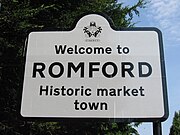| Keech v Sandford | |
|---|---|
 | |
| Court | Exchequer Court |
| Decided | 31 October 1726 |
| Citation | (1726) Sel Cas Ch 61, 25 ER 223, [1558-1774] All ER Rep 230 [1726] EWHC Ch J76 |
| Transcript | Full text of judgment on Bailii |
| Court membership | |
| Judge sitting | Lord King LC |
| Keywords | |
| Strict liability, fiduciary duty, conflict of interest | |
Keech v Sandford [1726] EWHC J76 is a foundational case, deriving from English trusts law, on the fiduciary duty of loyalty. It concerns the law of trusts and has affected much of the thinking on directors' duties in company law. It holds that a trustee owes a strict duty of loyalty so that there can never be a possibility of any conflict of interest.
The case's importance derives partly from its historical context, with the South Sea Bubble. Lord King LC, who decided the case, replaced the former Lord Chancellor, Thomas Parker, 1st Earl of Macclesfield who was tried and found guilty in 1725 for accepting bribes and speculating with and losing client money in the South Sea crash. Lord Macclesfield had, probably not coincidentally, previously held that a fiduciary was entitled to take money from a trust, invest it on their own behalf, and keep the profit, if they restored money to the trust.[1] Keech reversed this, and the law in England and the UK has maintained a strict opposition to any possibility of a conflict of interest ever since.[2] The remedy of granting a constructive trust over property, and the strict approach that all possibility of a conflict of interest was to be avoided, derived from the general outrage at the time.
- ^ Bromfield v Wytherley (1718) Prec Ch 505
- ^ e.g. Companies Act 2006 section 175 and Boardman v Phipps [1966] UKHL 2